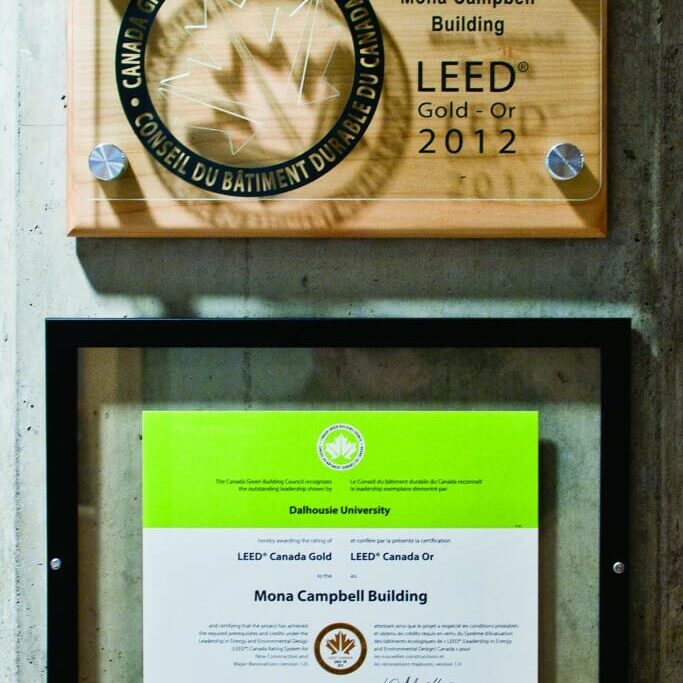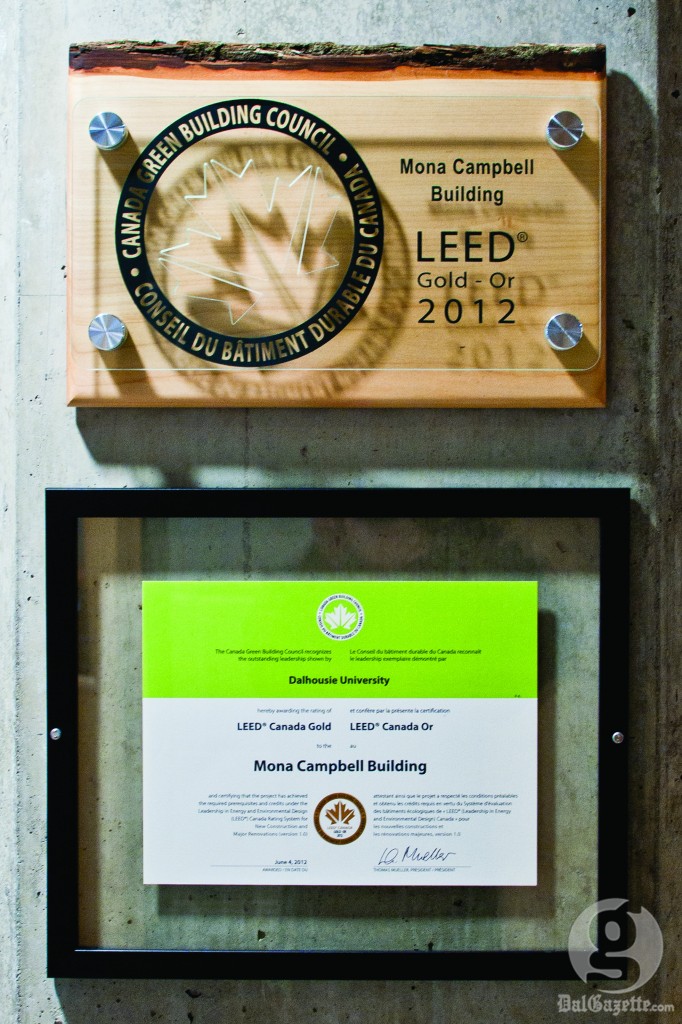

Dalhousie has a new claim to fame: the greenest university building in Atlantic Canada. (Chris Parent photo)
This summer the Mona Campbell building, the newest facility on Dalhousie’s Studley campus, received a LEED gold certification. The Mona Campbell houses both the College of Continuing Education and the College of Sustainability.
Many students at Dal are unaware of the building’s newly won credentials. However, after two years of classes, it appears to be a hit. The building “has very comfortable seats—and lots of technology,” says Marwa Alamer, a student studying at the College of Continuing Education.
The LEED certificate, which stands for Leadership in Energy and Environmental Design, is awarded to buildings designed according to environmentally sound principles. A candidate building is examined on a point scale, with points given for meeting certain criteria. For example, six points are awarded for public transportation access, and one point for using certified woods. To achieve LEED gold, a building must receive 60 of 100 possible points.
The Mona Campbell is only the second building in Nova Scotia and the first university building in the Maritimes to be awarded LEED gold status. It was designed by Nova Scotia’s FBM Architects and features a rainwater collection system, a material-saving ‘bubbledeck’ design, air quality monitors, and high-efficiency lighting.
Although building green is more expensive than conventional construction, this is not due to expensive materials, says Steve Mannell, director of Dal’s College of Sustainability.
“A lot of it is in the thinking,” he says. “Design and planning time are the biggest costs.”
“The classrooms have been very heavily booked,” says Mannell. “It’s a really good teaching environment.” In addition to sustainability, the temperature, acoustics, airflow and lighting are all improved compared to Dal’s older buildings.
“Personally, I think the atmosphere is the most important thing,” says Annie Flaherty, an English and theatre student taking classes in the building.
Amak Al-Haddad, another student at the College of Continuing Education, agrees. “I think this building is the best at Dalhousie,” he says.
The Mona Campbell building is part of a broader push at the university towards sustainable development, both academically with the College of Sustainability and as an institutional ethos.
“We were very concerned about doing something academically, if the university wasn’t matching it in terms of its own behaviour,” says Mannell. “What are you going to do to show that we’re walking the walk?”
Although Dal is currently a leader among Maritime universities, it lags well behind the large universities on the West Coast. But as part of the university’s Sustainable Building Policy, all new buildings will be designed to meet the LEED gold certification.
“We’ve got a chance to have one of the most sustainable campuses across Canada,” says Mannell.
Dal is currently facing a space crunch. Although the Mona Campbell has helped alleviate the problem, it’s clear that more construction will be necessary in the next few years.
“The building was really designed to deal with a shortfall of classes in the 60 to 90 person range. So there’s still a lot of pressure on the bigger classrooms in the university,” says Mannell.
A few buildings in Halifax are poised to surpass Dal’s achievement. Both Nova Scotia Power’s new headquarters, and the Seaport Farmers’ Market have set their sights on the highest level of certification offered by the Canadian Green Building Council: LEED platinum.






